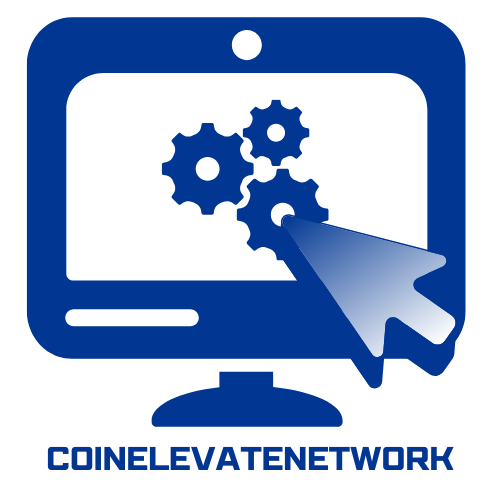Imagine a world where your toaster talks to your fridge, and your coffee maker knows exactly when you need that caffeine fix. Welcome to the Internet of Things (IoT), where everyday devices are smarter than some of us. Pair that with cloud computing, and you’ve got a recipe for a tech revolution that’s transforming how we live and work.
Table of Contents
ToggleOverview of Internet of Things and Cloud Computing
The Internet of Things (IoT) connects devices that communicate over the internet, offering users enhanced convenience and automation. Various objects, such as thermostats, wearables, and security systems, gather and share data, resulting in increased functionality. Cloud computing, on the other hand, provides the necessary infrastructure and services to process and store this data effectively.
IoT devices generate large amounts of data, which cloud computing can analyze and manage seamlessly. Data storage utilizes scalable resources in the cloud, allowing businesses to grow without worrying about physical storage limitations. This flexibility enables organizations to respond quickly to changing needs.
Integration between IoT and cloud computing leads to numerous applications across various industries. Smart cities rely on this technology for traffic management and energy efficiency, while healthcare systems use it for patient monitoring and telemedicine. Retail businesses leverage IoT for inventory management and improved customer experiences.
Improved data accessibility is another key advantage of this integration. Users can access real-time insights from anywhere with an internet connection, promoting informed decision-making. Greater connectivity between devices allows for automated responses, further enhancing efficiency.
Security remains a critical concern in the deployment of IoT and cloud solutions. Ensuring robust data protection measures and compliance with regulations is essential. Organizations need to implement security best practices to safeguard user information and prevent data breaches.
This convergence of IoT and cloud computing drives innovation and improves operational efficiencies, transforming how individuals interact with technology.
Benefits of Integrating IoT with Cloud Computing

Integrating IoT with cloud computing offers significant advantages. This combination enhances operational efficiency and drives innovation.
Scalability and Flexibility
Scalability represents a core benefit of this integration. Organizations can expand their IoT systems seamlessly as demand grows. Cloud infrastructure supports rapid deployment of new devices without upfront hardware investments. Flexibility is evident, as businesses can adjust their data storage and processing resources based on specific needs. Adapting to changes in user activity and data flow becomes straightforward, ensuring smooth performance during peak times. The combination effectively eliminates limitations of traditional systems, promoting growth and agility across multiple sectors.
Enhanced Data Analytics
Enhanced data analytics emerges as another key benefit. IoT devices continuously collect vast amounts of data, while cloud computing provides powerful tools for analysis. Organizations can draw insights from real-time data trends and patterns quickly. Predictive analytics becomes possible, allowing proactive decision-making and improved operational strategies. Access to robust cloud-based analytics platforms helps teams collaborate and innovate more effectively. These insights drive efficiencies, reduce costs, and fuel better customer experiences, transforming businesses across industries.
Challenges Facing IoT and Cloud Computing Integration
Integrating IoT and cloud computing presents various challenges that can hinder progress and innovation. Security and connectivity issues frequently arise during this integration process.
Security Concerns
Security concerns dominate discussions surrounding IoT and cloud computing. Cyberattacks targeting connected devices often exploit vulnerabilities in both IoT systems and cloud infrastructures. Data breaches expose sensitive information, putting user privacy at risk. Organizations face significant consequences and loss of consumer trust if security measures fail. Implementing robust encryption, multi-factor authentication, and regular security updates can mitigate risks. Moreover, establishing stringent access controls for IoT devices enhances overall system security.
Connectivity Issues
Connectivity issues frequently complicate the integration of IoT and cloud computing. Intermittent internet connections can disrupt data transmission between devices and the cloud. Without consistent connectivity, real-time data access suffers, limiting the effectiveness of IoT applications. Diverse network protocols used by various devices may lead to compatibility challenges. Ensuring seamless interoperability among devices and networks becomes essential for successful integration. Leveraging edge computing can also reduce dependence on constant internet connectivity, enabling local data processing and improved performance.
Real-World Applications
Real-world applications of the Internet of Things (IoT) and cloud computing illustrate their synergistic effects on various sectors. Many innovations enhance everyday living and operational efficiencies.
Smart Homes
Smart home technology employs IoT devices to streamline daily tasks. Thermostats adjust temperatures based on user habits, leading to energy savings. Lighting systems can be controlled remotely, improving convenience and security. Smart appliances, such as refrigerators and washing machines, offer notifications to users regarding maintenance needs. These capabilities enhance overall user experiences while contributing to energy conservation. Integration with cloud platforms ensures real-time data access, allowing homeowners to monitor and control their devices from anywhere, promoting a connected lifestyle.
Industrial Automation
Industrial automation utilizes IoT and cloud computing to optimize manufacturing processes. Sensors track equipment performance, generating data for predictive maintenance to reduce downtime. Automated systems streamline production lines, increasing efficiency and output. Through cloud platforms, manufacturers access analytics to improve decision-making and response times. Supply chain management benefits from real-time data sharing, enhancing inventory control. Consequently, organizations achieve significant cost reductions while boosting productivity. Combining IoT with cloud computing fosters innovation, transforming traditional industrial practices into smart manufacturing ecosystems.
Future Trends in IoT and Cloud Computing
Emerging trends in IoT and cloud computing reflect rapid technological advancements. Enhanced artificial intelligence integration drives smart devices’ capabilities, enabling more intuitive interactions. Organizations leverage machine learning algorithms to analyze vast data sets, unlocking deeper insights and predictive functionalities.
5G technology plays a crucial role in connecting IoT devices with ultra-low latency. Increased bandwidth allows real-time data transfer between devices, optimizing performance in critical applications such as healthcare and autonomous vehicles.
Sustainability will influence future IoT applications. Smart energy management solutions optimize consumption, helping reduce carbon footprints. Companies implement IoT-based monitoring systems to track resource usage, enhancing efficiency and promoting environmentally friendly practices.
Edge computing complements cloud infrastructure by processing data closer to its source. Local data processing minimizes latency, ensuring quicker responses from IoT devices. This approach is vital for mission-critical operations where real-time processing can significantly impact outcomes.
Interoperability will emerge as a significant trend. Inter-device compatibility leads to seamless communication among various platforms. Standardized protocols enable different manufacturers to collaborate, enhancing the overall user experience.
As organizations expand IoT implementations, security technologies advance concurrently. Blockchain technology introduces secure, decentralized frameworks for verifying transactions and ensuring data integrity. Enhanced encryption techniques and identity management safeguards privacy across platforms.
Overall, the intersection of IoT and cloud computing pushes the boundaries of innovation. These trends promise to revolutionize industries and improve operational efficiencies significantly.
The integration of IoT and cloud computing is reshaping how people interact with technology and each other. This powerful combination not only enhances operational efficiency but also fosters innovation across various industries. As organizations adopt these technologies, they unlock new possibilities for real-time data analysis and improved decision-making.
However, the journey isn’t without challenges. Addressing security and connectivity issues remains paramount to ensure user trust and system reliability. As advancements like 5G and edge computing emerge, they offer solutions to these hurdles, paving the way for a more connected future.
Ultimately, the convergence of IoT and cloud computing is a catalyst for transformation, driving smarter solutions and sustainable practices that will define the next era of technological advancement.



